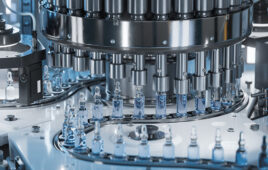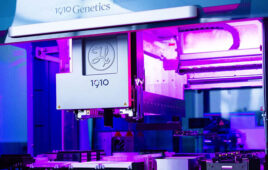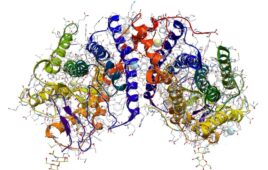
[surassawadee/Adobe Stock]
The momentum is continuing in early 2024, with NVIDIA announcing renewed pacts with Amgen and DeepCell. Amgen will use NVIDIA’s drug discovery generative AI platform BioNeMo Cloud service to accelerate molecule screening and optimization processes. Meanwhile, NVIDIA’s partnership with Deepcell hinges on advancing cell morphology studies with generative AI.
“There is a very big moment happening in the world of pharmaceuticals and how drugs are being discovered,” said Kimberly Powell, vice president of Healthcare at NVIDIA, in a call with journalists. Powell compared the traditional process of drug discovery to searching for truffles. “You had to forage,” she said. Expert truffle hunters would rely on their deep knowledge of the forest along with the help of animals to sniff out the valuable fungi. “Hopefully you get there before everybody else,” Powell said. “Over the last several decades, digital biology and mathematical approaches have helped pave the way for the computer aided drug discovery industry.”
Amgen unveils plans for powerful AI system “Freyja”
In March 2023, NVIDIA announced that Amgen was one of the first companies to employ BioNeMo. Peter Grandsard, the company’s executive director of Biologics Therapeutic Discovery, Center for Research Acceleration by Digital Innovation at Amgen noted in a press release that the platform was “dramatically accelerating” biologics discovery. “With it, we can pretrain large language models for molecular biology on Amgen’s proprietary data, enabling us to explore and develop therapeutic proteins for the next generation of medicine that will help patients,” Grandsard said.
On January 8, 2024, Amgen and NVIDIA announced an expansion of their collaboration initiative. Amgen said it plans to create AI models trained to analyze one of the world’s largest human datasets on an NVIDIA DGX SuperPOD, a full-stack data center platform, that it will install at Amgen’s deCODE genetics’ headquarters in Reykjavik, Iceland. It named the system Freyja in honor of the Norse goddess with the ability to predict the future.
The DGX SuperPOD, comprising 31 NVIDIA DGX H100 nodes and a total of 248 H100 Tensor Core GPUs, could significantly compress the time to train AI models.
The main focus of this project is to build a human diversity atlas for drug target and disease-specific biomarker discovery. Amgen expects the endeavor to accelerate the development of AI-driven precision medicine models, leading to individualized therapies for patients with serious diseases.
NVIDIA Clara to power Deepcell’s AI imaging platform
The AI-powered single cell analysis company Deepcell’s research collaboration with NVIDIA centers around advanced computer vision technology. Menlo Park, California–based Deepcell plans to apply NVIDIA’s computing expertise and the NVIDIA Clara suite to develop novel algorithms for cell image analysis. NVIDIA Clara includes computing platforms, software, and services that power AI technologies for healthcare and life sciences, including medical imaging and instruments for genomics and drug discovery.
Deepcell’s REM-I platform, which debuted last year, is set to be fully commercialized in 2024. It combines single-cell imaging, sorting, and high-dimensional analysis with notable applications in cancer biology and stem cell biology.
The platform is “designed to expose and analyze the heterogeneity within samples, as well as the heterogeneity in response to therapies, all at single cell resolution,” said Deepcell co-founder and CEO Maddison Mahdokht Masaeli, in an interview last year.
Bridging the gap between technical and scientific domains
Addressing the technical and scientific challenges of integrating generative AI into cell analysis, George Vacek, genomics alliances lead at NVIDIA, emphasized the unique challenges of this integration. “The biggest challenge for generative AI in any scientific domain is that it can be difficult for a single organization to have sufficient expertise in both technical and scientific aspects,” Vacek explained. He underscored how the collaboration between NVIDIA and DeepCell aims to bridge this gap, relying on cell morpholomic measurements as “an orthogonal truth set” to traditional transcriptomic sequencing approaches to bolster the accuracy and interpretability of the models.
Looking ahead to the future of generative AI in single-cell research, Vacek shared his vision for the new year. “In 2024, we will see the breakout of lab in the loop AI modeling for drug discovery, such as highlighted in our recent Genentech announcement,” he said.
“DeepCell’s ability to sort unlabelled cells morphologically, according to embeddings of an AI model, will tremendously accelerate the flywheel of generative AI in perturbation screening experiments to accurately identify individual gene targets, gene signatures, and cell states affected by perturbations or genetic interactions.”
Filed Under: Industry 4.0, machine learning and AI



